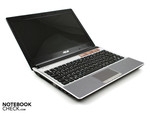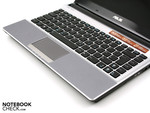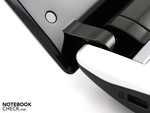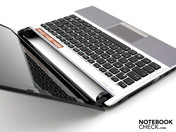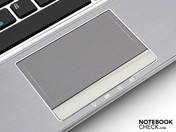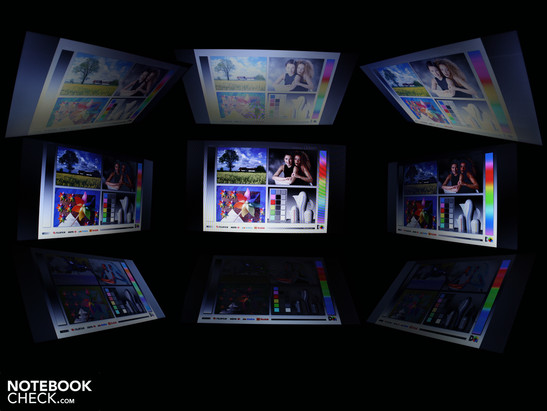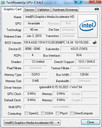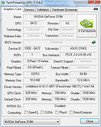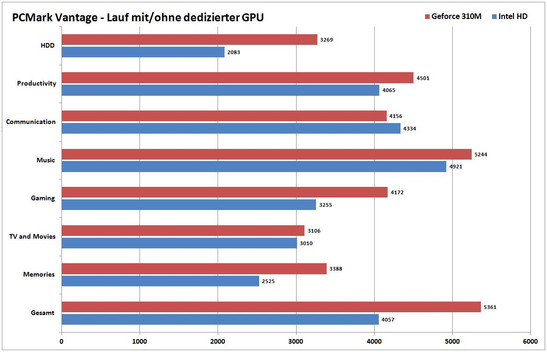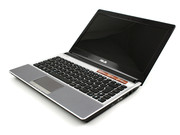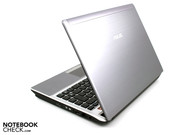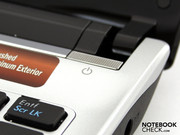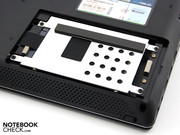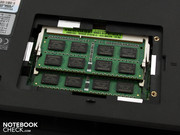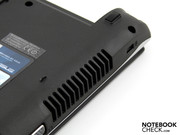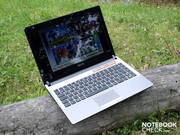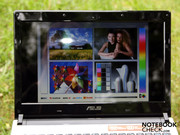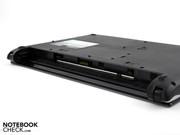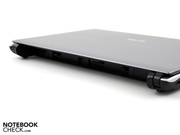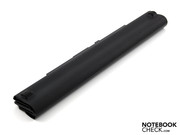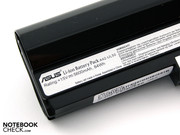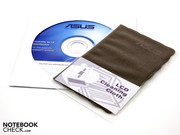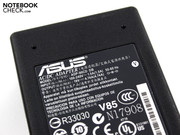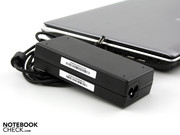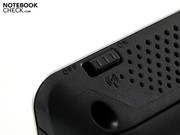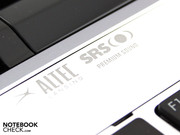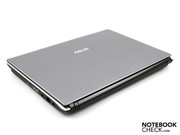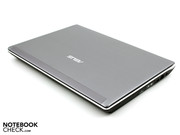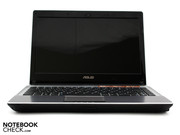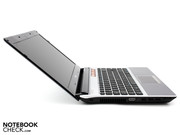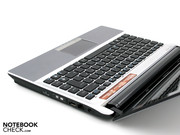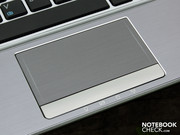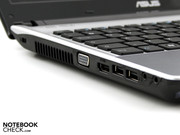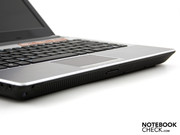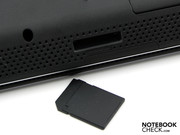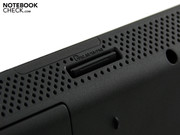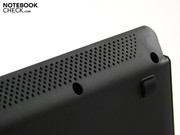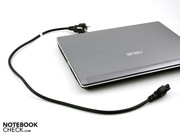Review Asus U30JC-A1/QX043V Notebook

Asus has made a name for itself in the last 12 months; on the one hand through gaming-laptops like the G73H and the other side with thin ULV-notebooks like the UL30A-QX050V (13.3-inch), the UL50Vt (15.6-inch), or the youngest UL50VF with Nvidia Optimus. The UL-models are based around Intels most efficient but performance-weak Core 2 Duo CULV processors such as the SU7300. Though the notebooks achieved high numbers with respect to battery life, the performance data was comparatively weaker.
Now Asus has removed the letter L from the product description, out of which comes the handy 13.3-incher, outfitted with a standard notebook processor of the modern variety. Usually, multimedia laptops larger than 15.6 inches are equipped with the Core i5-430M. Asus then tries to achieve a careful balance here and has its work cut out for it. The Asus-website lays claim to the slogan "all-day computing with 9 hours on a single battery charge."
Can Asus keep their promises? How does the Nvidia Optimus GPU, a hybrid of the Geforce 310M and the Intel HD, affect the mobility? Can the small casing effectively disperse the heat generated from the processor and graphics when under stress? Our review will clear the air.
Case
The manufacturing quality of notebooks has converged in the last ten years; no longer anymore do we have clapping bay doors and unclean-looking stamped plastic pieces. In order to distance themselves from the competition, many manufacturers place value on premium matte metal surfaces. Asus has reached for the brushed aluminum here. Eyes and hands immediately appreciate Asus' craftsmanship: the surfaces are smooth and sit securely on the corners and angles exactly as they should.
The palm rest feels cool to the touch, even when the device has already ran for several hours without much stress. The same can be said of the thin outer lid, which possesses a good degree of stiffness. Only at the very middle can one slightly dent the surface with a finger. Otherwise, the outer lid can only be contorted slightly and it sits firmly on locked hinges which sit adjacent to the work area. Because the hatches on the underside are relatively small, the notebook has a compact and stiff form. Only with distinct force could the chassis be bent with two hands.
The stability, however, has its price. The weight of the 2.2 kilogram is heavy for a 13.3 inch notebook. Hence, we do not count the device in the sub-notebook category. Add to this weight a massive power supply weighing in at 360 grams, the cable for which is relatively light and equally short at 65 centimeters.
We had a small point of contention with the LED status lights mounted on the front side of the device, which serve to relay the status of the HDD, WLAN, battery-charge and power. These LEDs are not located within the normal viewing position, requiring us to turn and look under the notebook to check hard drive or WLAN activity. In a counter-move, the user is informed through a blue LED next to the caps-lock button if they have caps-lock engaged, which puts an end to the guesswork as to why the on-screen text has suddenly become large.
Connectivity
13.3-inch notebooks users do not want to go without an optical drive and with this model, they don't have to; a multi-format DVD-burner is located on the right side. The ASUS U30JC's multimedia ambitions are sizable, but the device brings only the minimum connectivity to the table--exactly the same as its CULV predecessor the UL30: HDMI, VGA, 3xUSB 2.0, Ethernet, 2x Audio ports.
Those who wish to use the U30JC as an all-in-one PC will quickly run into barriers. Quick data transfers through eSATA hard drives are not possible, nor is the the new USB 3.0 standard on board. An ExpressCard expansion slot as well as a docking-port also fell by the wayside. The front and back sides do not have any ports aside from a CardReader on the front side (SD, MMC, MS, MS-Pro). The deep-seated hinges and rear-mounted battery prevent ports from being located in those areas.
Wireless connection possibilities such as Bluetooth 2.1 and WLAN (DraftN-standard) are on board. The integrated Ethernet network card supports Gigabit LAN.
On the software side, Asus follows the path of many other manufacturers and utilizes the 64 bit variant of Windows 7 Home Premium. A recovery-USB stick was not included in the packaging, though we did find a CD loaded with drivers. Asus for a long time was among the last bastion of manufacturers who included recovery DVDs, though this bastion has since fallen. To this end, buyers will have to utilize the pre-installed AI Recovery Burner to burn DVDs at their own cost.
Nevertheless, Asus refrains from loading their machines with bloatware. We found test versions of Microsoft Office 2007 and Trend Micro Internet Security. The latter was consistently on our nerves and continually demanded that we activate it.
Input Devices
Keyboard
The keyboard is particularly suited to typists, though potential users will have to look past an extremely spongy keyboard base. It was not very easy to do so, as the action of the keys without spring deflection is weak at best. The pressure point is measurably clear, though it comes very close to being simply squishy. When typing, we had the feeling that we were using a premium keyboard.
The free-standing keys offer large hands enough breathing room, increasing typing accuracy. In comparison with the competition, the successful layout with its large keys, the distinct space between them and their clear markings stand out above the rest.
Asus generally likes to give its devices hardware-buttons, which makes the activation of energy-related functions or wireless modules easier. This is not so on the U30JC, which lends the work surface a cleaner look. Even the power key is tucked away under the right display hinge. Understatement is in fashion.
There is, in fact, a hardware button, which serves to activate both wireless modules. It is located awkwardly and almost invisible on the front left side. The switch is difficult to move and gives the impression that it was incorporated into the chassis late in the development cycle. All other functions such as display brightness, loudness, mute, picture source or WLAN/Bluetooth are controlled through function keys (Fn + F1, F2, etc.).
Touchpad
The touch pad is located just slightly below the surface of the palm rest. Its surface has the same Alu-look as the rest of the immediate area. It is made of a hard plastic, is very large and is sensitive all the way to its edges. Movement is nimble and accurate, though there are disadvantages.
The model is a Multi-Touch-Pad (Elan Smart Pad V2.2; Driver ETDWare 7.0.5.9_WHOL). As far as two-finger gestures, we were only able to roll (two fingers next to each other) or zoom (two fingers coming together or moving apart). A horizontal or vertical scrollbar is missing; the activation of this function is also missing from the Smart-Pad software. The same goes for the zoom function: according to the Smart-Pad Tool, it simply doesn't exist. Users won't use it anyways, as the movement is very hesitant even though the sensitivity is correctly dialed in.
Display
The glare-finish 13.3-inch panel has a native resolution of 1366x768. This 16:9 standard resolution lends an acceptable overview to the display. Working with several, detail-rich applications at once such as Word or Excel is not recommended, though.
With a black value of 1.36 (middle) we were able to ascertain a low contrast of 166:1. A measurably higher contrast would have been easier on the eyes, though the result is something that can be coped with. Colors on the display are rather subdued as opposed to vibrant and exciting. The utilization of a glare-type display optically gives the colors back some of their proper brilliance.
| |||||||||||||||||||||||||
Brightness Distribution: 91 %
Center on Battery: 226 cd/m²
Contrast: 166:1 (Black: 1.36 cd/m²)
The panel, despite the contrast, is still able to impress with a good brightness level. On average we measured 227 cd/m². We measured a maximum light density of 237 cd/m² in the upper right hand corner. In the face of mobile ambitions and reflections on the display a luminance of 250 cd/m² would have been desirable.
The 13.3-inch panel lacks a matte finish, which is to say that it has a glare-type panel. Use under direct sunlight is possible, though in situations of strong sunlight a shady area should be sought out. Positive: running on battery power does not threaten the U30JC's brightness. A light sensor is not built in.
In line with the robust and largely matte surfaces and the small 13.3-inch form factor, using this notebook on the move is possible. Interested parties should be aware: the battery life is greatly reduced when at maximum brightness compared to the values in our tests.
The vertical viewing angles of the glare-display are very small. Horizontally we were able to move left and right to about 45 degrees. At this point, the display darkens noticeably and the colors falsify. Vertically the same effect begins at 20 degrees of deviance. The picture becomes dark quickly and the colors invert. In the darkroom photo the small vertical viewing angles are clear to see.
Dark writing on bright backgrounds are less dependent on the viewing angle than colors and pictures. The low viewing angles hardly have major consequences for users of the notebook; watching a film with friends can be difficult when one or another is not satisfied with their viewing position. Viewers looking on from above could only recognize the outlines of what was on screen.
Performance
The U30JC is outfitted with an Intel Core i5-430M. The 32mm CPU has two physical cores each at 2.26 GHz (standard clock speed). The clocking when using Turbo-Boost lies between 2.26 and 2.533 GHz. Turbo-Boost overclocks individual processor cores automatically, where the applications at hand determine how many cores should have their frequencies raised.
Applications may also make use of up to four cores (Hyper-Threading). When all four cores are at work, all four of them are clocked not at 2.533 GHz but rather at 2.35 GHz. Only when an individual core alone bears the complete computing burden (Single Core Benchmark), then its frequency is raised by Turbo-Boosting to the indicated 2.533 GHz.
A special feature of the Core i5-CPU: the integration of the memory controller and the IGP-graphics card (GMA HD) in the processor unit. This allows for an interesting connection with the dedicated Nvidia 310M graphics chipset. The so-called Nvidia Optimus technology automatically switches between the Intel HD graphics and the dedicated GPU. Different from earlier hybrid-GPU solutions, the Optimus technology does not switch back and forth continuously between the two graphics units, which always led to a change in frame buffer and interruption of the VGA-output signal.
The Intel HD is always active, as its frame-buffer is continuously used for display output. The dedicated Nvidia GPU is therefore not physically connected to the VGA-out; instead the Geforce 310M writes the display information directly to the frame buffer of the GMA HD. On these grounds, there is no lag time or black screens when the system switches between the two graphics cores. Everything happens automatically which makes a physical hardware switch unnecessary. Users of the Optimus system can count on good battery life from their equipped devices, as the dedicated graphics can be completely turned off.
| PCMark Vantage Result | 5361 points | |
Help | ||
With the PCMarkVantage software suite we tested the combined performance of the CPU, graphics, RAM and hard drive. We wanted to know how strong a system without dedicated graphics (Intel HD) differentiated itself from that with the Nvidia 310M. We configured Optimus via the Nvidia control panel as such and then ran PCMark Vantage twice, each in Asus High Peformance Mode).
U30JC with Intel HD
The overall result of 4,057 points is surprising in a mostly negative way. The result is not itself a bad one, but it lies around the same level as a Core 2 Duo P9500 system (i.e. MSI Megabook GX620). Test systems with the 430M-CPU were almost always able to put up at least 5,000 points (Acer Aspire 4820TG-434G64Mn) if not 6,000 points (MSI GX640-i5447LW7P).
Why is the system being thwarted in this manner? The pure calculation speed of the processor lies at the same level as other 430M-notebooks. Wprime, SuperPi and Sisoft Dhry/Whet are performing at the normal 430M levels. It is the hard drive and the weak graphics that the PCMark Vantage is rating as low. The HDD score (2,083) is about 1,000 points lower as that, for example, in the Acer Aspire 7745G-434G50Bn (430M, HD5850). Due to the slow Seagate hard drive the other scores (productivity, music, etc.) each lose a few hundred points a piece., which when brought together, affects the total score above. Check out the following analysis of the hard drive.
The gaming score (3,255) is one which would be expected from a system without a dedicated graphics card (mySN MB6, Intel HD). As a reminder: the Optimus system is deactivated during standard Office operation as is the Nvidia CUDA hardware acceleration. An Acer Aspire 5740G-434G32Mn (HD5470) achieves 4,206 points here. A 430M + 310M configuration in a Dell Vostro 3500 manages almost 3,900 points.
U30JC with Geforce 310M
With the Nvidia graphics active, performance-hungry consumers will be pleased. 5,361 points were scored in PCMark Vantage and the sub-scores were somewhat better than those when operating only with the Intel HD. A gaming score of 4,172 was to be had, almost 1000 points more than previously available on the energy-efficient setup. Applications that benefit from the hardware support available to the 310M (CUDA, DirectX Compute, Open CL, H.264) clearly run faster than before. These differences were also clear in the individual sub-scores, though unexplainable was the 1,200 point rise in the HDD score (2,083 to 3,269).
The system was completely usable in every instance; multiple programs running simultaneously did not stress the U30JC out one bit. The fast 4 GB DDR3 RAM is one of the reasons for this. Because the 64-bit operating system is able to take complete advantage of the 4,096 MB, the system has an advantage over comparable 32-bit operating systems which are only able to address slightly over three gigabytes of memory at once.
| 3DMark 03 Standard | 10177 points | |
| 3DMark 05 Standard | 6786 points | |
| 3DMark 06 Standard Score | 3225 points | |
| 3DMark Vantage P Result | 1177 points | |
Help | ||
The Seagate hard drive (Type ST9500325AS) with a capacity of 500 GB operates at a speed of 5400 rpm. HDTune relayed an average sequential read speed of 63.8 MB per second. This score places the U30JC squarely in the middle of comparable hard drives.
What makes the HDD so slow is the below average burst rate of only 58.8 MB/s. A higher burst-rate, like the 117 MB/s on the Acer Aspire 5740G-434G50MN, indicates the transfer rate from (and only from) the HDD cache and tells buyers what data transfer speeds that the hard drive can achieve. In the case of the Seagate HDD, it has a slow, below-average cache.

The Nvidia GeForce 310M boasts 512 MB of DDR3 memory, despite being categorized as an entry-level GPU with DirectX-10.1 capabilities (no PhysX support). The performance coincides with that of the GeForce G 210M which has an identically clocked core (625 MHz) and the same 3DMark06 values. The memory is clocked at 790 MHz and the chip was finished with a 40mm process, different from the 210M. This process gives the 310M better energy efficiency properties.
The GPU is not only suitable for gaming, but also plays a support role to the processor. HD decoding (H.264, MPEG-2, MPEG-4) can be taken over by the PureVideo HD-capable graphics chip, as can video coding (CUDA, DirectX Computer and OpenCL). In 3DMark06 a weak score of 3,225 points was achieved, though this did not stop us from seeing how Left4Dead, World in Conflict and FarCry2 fared.
As can be expected, World in Conflict was only playable at medium details (29 FPS, 1024x768). At high details the game slows down mercilessly until the frames reach a low of 16 FPS. The action game FarCry2 maxes out at high details and 1024x768 at 20 FPS, which isn't exactly playable. Older and less demanding titles such as Left4Dead are enjoyable at 44 FPS (high, 1024x768), which leaves a little breathing room to play the game in its native native resolution of 1366x768. Serious gamers should distance themselves from the Geforce 310M and look to the ATI HD5650 or Nvidia GT 330M for a better experience. These two are truly the cream of the current entry-level gaming GPU crop.
| low | med. | high | ultra | |
|---|---|---|---|---|
| World in Conflict - Benchmark | 29 | 16 | ||
| Far Cry 2 | 62 | 20.25 | ||
| Left 4 Dead | 44.2 |
Emissions
System Noise
With respect to noise, the system shows itself in a positive light. With around 32 dB(A), the 13.3-inch notebook is consistently audible under normal operation but also very quiet. When surfing the internet and reading emails the cooling fan runs slowly and is hardly noticeable. It is only when the i5-processor and the Nvidia graphics are put to task in a stress test that the cooling fan makes its presence known with 37.3 dB(A). This maximum value was not reached during the gaming tests (34.4 dB(A)), and is really only practical for stress tests such as Furmark and Prime95. In this situation the fan is clearly removing waste heat from the chassis but it does so in a consistent way.
Our ergonomic impressions were positive; though the user does not receive a silent Office-notebook, there is no reason to balk at sounds approaching 35 dB(A). Though the cooling never turns off, even in Silent Office Mode, it only produces an average of 32 dB(A), which is to say that it is quiet.
The standard Seagate hard drive does not draw attention to itself during normal use, though the soft clacking of the hard drive heads can be heard if you have an ear tuned in. The same cannot be said of the DVD-drive, which during operation watching a film emitted a constant shrill whistle. This distracting noise was constant and interrupted our enjoyment of the film (37.6 dB(A)).
Noise level
| Idle |
| 31.8 / 31.9 / 33 dB(A) |
| HDD |
| 32 dB(A) |
| DVD |
| 37.6 / dB(A) |
| Load |
| 34.4 / 37.3 dB(A) |
 | ||
30 dB silent 40 dB(A) audible 50 dB(A) loud |
||
min: | ||
Temperature
During both the processor and graphics benchmarks the Asus U30JC was neither too warm nor too loud. After a 12-hour stress test we measured a maximum temperature of 35.1 degrees Celsius around the work area (touch pad). The underside was also able to be handled, as the thermometer only punctually reached 39.9 degrees Celsius. The average here was around 32 degrees Celsius.
The stress test tried to bring the Core i5-430M to its 90 degree Celsius maximum, though such a value was never reached. A 3DMark06 test executed right after the stress test was complete revealed a few extra 3DMarks more than in the normal test 5,255 3DMarks/ 2,582 CPU score (1280x1024).
As one might think, most of a computer's life is not spent under stress. The typical status of the 13.3-incher was at idle with brief periods of intermittent stress. With inactive Geforce graphics and the processor at idle the top surface of the notebook reached only 26 degrees Celsius while the underside managed one degree warmer at 27 degrees. Though the fan never shut off, there were also no problems with thermal management inside the device.
(+) The maximum temperature on the upper side is 37.5 °C / 100 F, compared to the average of 34.3 °C / 94 F, ranging from 21.2 to 62.5 °C for the class Office.
(+) The bottom heats up to a maximum of 39.9 °C / 104 F, compared to the average of 36.8 °C / 98 F
(+) In idle usage, the average temperature for the upper side is 24.7 °C / 76 F, compared to the device average of 29.5 °C / 85 F.
(+) The palmrests and touchpad are reaching skin temperature as a maximum (35.1 °C / 95.2 F) and are therefore not hot.
(-) The average temperature of the palmrest area of similar devices was 27.6 °C / 81.7 F (-7.5 °C / -13.5 F).
Loudspeakers
The front-mounted loudspeakers deliver a lean sound image. The speakers are from Altec Lansing, though that doesn't say much in the face of their performance. They cannot produce bass to any extent and the tone is thin; a balance of highs, middles and lows just isn't in the cards. The volume could fill a small room and is good for a notebook of its size. At high volumes one can hear the speaker membranes vibrating. The SRS sound improvement should be left on, otherwise without it the sound becomes even thinner.
The connection of external loudspeakers over a 3.5 millimeter cable can help the situation. We tested this with two active Yamaha speakers (YST-M20SDP): the volume provided by the notebook is relatively loud and can surely overwhelm some loudspeakers completely. The output was noise-free and at low-levels there was no evidence or humming or other sounds.
Battery Life
The run time of the 13.3-inch Asus U30JC should last an entire workday when the Nvidia Optimus GPU is switched off; this statement from the manufacturer could almost be confirmed. When surfing via WLAN with Geforce graphics deactivated, the U30JC lasted a proud 7 hours (423 minutes). The display brightness during this test was set to a comfortable level for the room (around the middle) while we visited various news portals.
Those not doing anything at all can deactivate the wireless module and dim the display to its maximum in order to gain another 1.5 hours of battery life. At idle with maximum energy-saving options on, the U30JC lasted 8:37 hours (517 minutes). Although the Geforce GPU was not active during the DVD-tests, only 4:09 was achieved by the 13.3-inch notebook. Display brightness was set to the same medium level as in the WLAN-test.
On the other side of the coin, those constantly stressing the U30JC with applications like video encoding can expect around 2 hours of battery life in Asus High Performance Mode, Geforce 310M active). The actual run time depends greatly on the application at hand; using the Geforce GPU will ensure that the battery life will not last more than 4 hours.
Despite the heavy 2.2 kilogram weight, the U30JC should not be frightened of comparison with Acers Timeline X-series. Though Asus endows its Timeline models with i5-430M processors and (up to) ATI HD5650 graphics processors, Asus collaborated with Nvidia to offer us i5-430M power with a switchable graphics core. In the all-decisive category of battery life the U30JC pummels its Timeline X opponent (4820TG-434G64Mn) (430M, ATI HD5650) dearly. The U30JC with 423 minutes of runtime versus its Timeline opponent with 300 minutes (WLAN test), 249 vs. 205 minutes in the DVD test (respectively). The Optimus advantage comes into play in that the system uses less energy than dedicated GPUs at idle. The idle battery life of the Timeline X 4820TG (597 min) is better than that of the Asus U30JC (517 min.).
Is Optimus alone responsible for the excellent battery life? Shutting off the Geforce 310M is only one element in bringing about a low energy consumption. Also a factor is the 8-cell battery with 5,600 mAh (type Li-Ion A42-UL50); this is the same battery that is used in the CULV notebooks from the same manufacturer (UL50Vt). The Core i5-430M is also very frugal when little performance is needed. An advantage is also the 4GB of RAM is of the DDR3 variety, which is of a higher efficiency.
The Asus U30JC is, if anything, energy-friendly: as long as all energy-saving options are checked off, consumption at the outlet is only 8.2 Watts when not charging the battery (idle, lowest luminance, Quiet Office mode, wireless off). This figure represents what most 10-inch notebooks require at idle (wireless on) and is very much below the average for a 430M-system at idle. However, our songs of praise fall silent on the Nvidia Optimus system when comparing this figure to two other Acer Timeline X models. The Aspire 5820TG-434G32MN and the 4820TG-434G64Mn (430M, ATI HD5650) only require 7 and 7.5 Watts respectively. Interesting point here is that Optimus is not present in these models and the HD5650 is a suitable graphics solution for gaming.
Let us not split hairs: with between 15 and 30 Watt consumption during operation the 13.3-inch notebook is thrifty, proven by the numbers we recorded. When the Nvidia-GPU is active in a 3DMarks06 test, the wattage climbs to 50 Watts. We measured the maximum electrical use when stressing the system with Prime95 and Furmark at 76.5 Watts, which makes the 90 Watt AC adapter appropriately sized despite seeming over-sized at first glance.
| Off / Standby | |
| Idle | |
| Load |
|
Key:
min: | |
Verdict
Asus nearly kept its promise: with battery life ranging from four to seven hours (DVD, WLAN) the term All-Day-Computing is just out of reach. For a well-performing system such as this with an Intel Core i5-430M and a dedicated graphics card this is a feat. Even the slightly older Timeline X Models from Acer (430M) cannot stick to the battery life that Asus projected. We cannot heap too much praise on the Nvidia Optimus system, as the technology was only tested with simple applications that did not stress the GPU to a great extent. When a little horsepower is needed, for example in games, notebooks with ATI HD5650 graphics take the cake. (Aspire 4820TG-434G64Mn).
On the plus-side the U30JC has a stable case/decklid, pleasant surfaces and a bright display. The palm rest remains cool at all times and the cooling fan stays quiet. Weak areas are first found when typing; the keyboard has poor feedback and its surface has plenty of give lending a spongy typing experience. The glare-TFT only has a small viewing-angle and the contrast is low. If you wish to connect peripherals, you will only find USB, VGA and HDMI. Room for more ports on the 13.3-inch notebook just wasn't in the cards.




